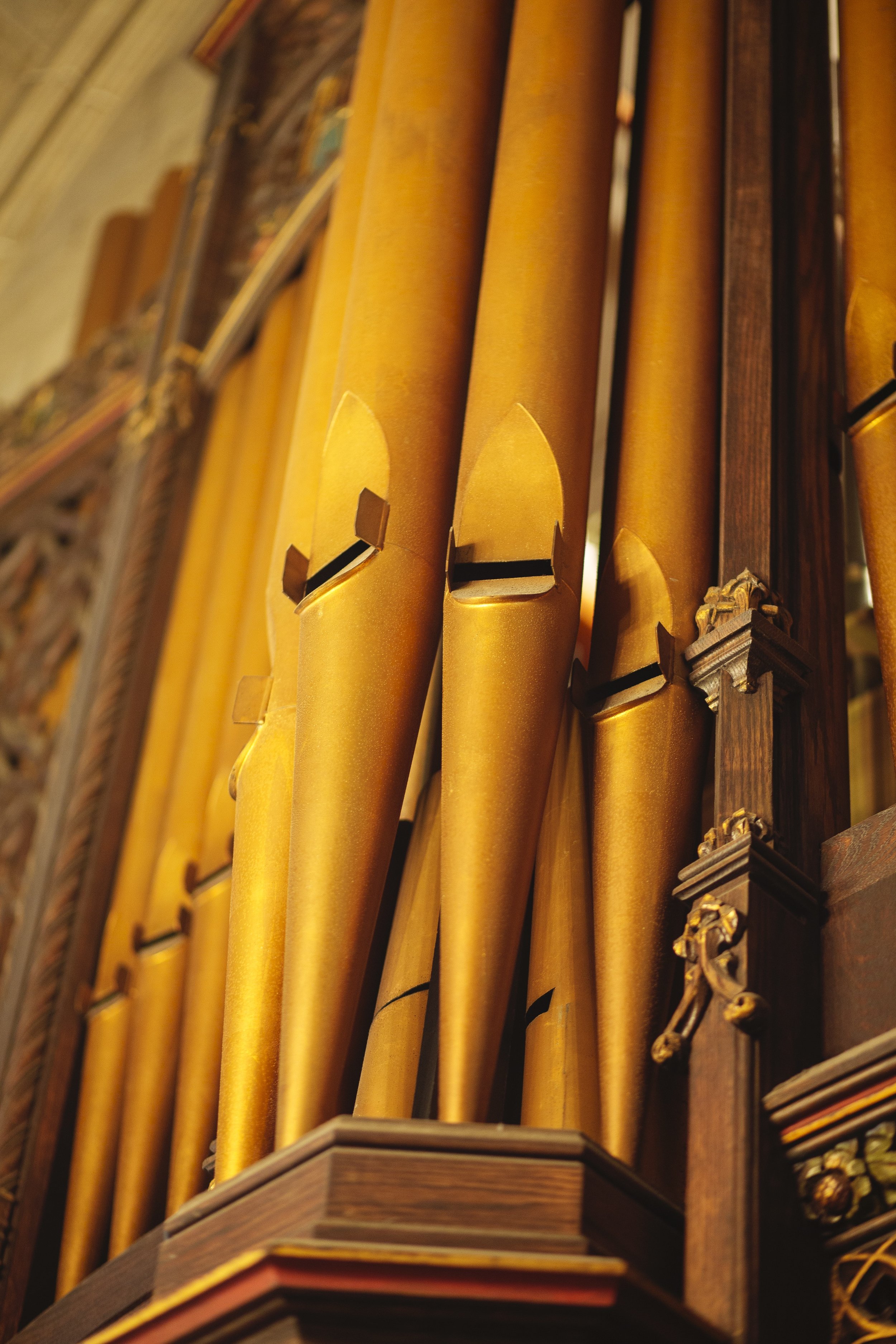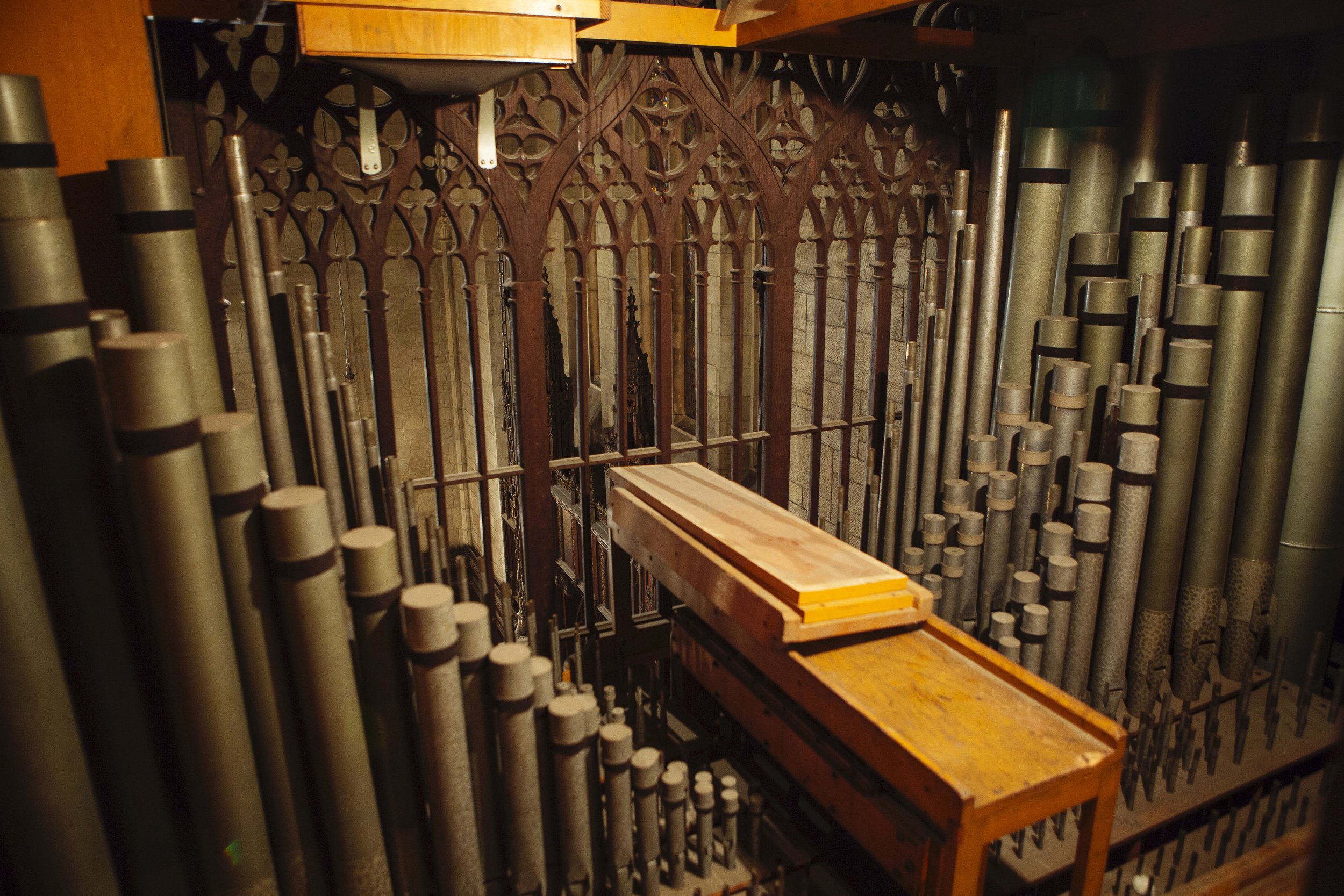Central’s organ is a historically significant instrument in dire need of repair.
the need
Despite having been built with the finest materials of its time, the perishable parts in Central’s 1950 4-manual, 79-rank Möller pipe organ (Opus 8000) have worn out and reached the end of their useful lives. Leather pouches and reservoirs have dried out and torn, which has rendered most of the instrument silent. With almost none of the instrument functioning, Central’s organ can no longer be used to effectively lead or support a congregation.
While the replacement value of the instrument is likely well over $3 million, a full renovation could likely be completed for approximately $1.5-2 million. Patchwork repairs would neither be cost effective nor stem the continued deterioration of the instrument. Thankfully, given the high quality of the original pipework and relatively few changes over the years, well over 90% of the original pipework remains, and thus Central’s organ is in a prime situation to be returned to its former glory and be a truly unique example of its era, as it was once praised by organists, music critics, and rival organ builders alike. In fact, once renovated, it would be the sole remaining example of a large Möller organ built within a decade of 1950 singing with its original character, and it would not only significantly aid Central’s Sunday worship services but also serve as an attraction and foundation for musical outreach to and engagement with the outside community.
the future
Central has a long and rich history of excellent sacred music, and a renovated organ would help bring Central’s music ministry to new heights. For centuries, the organ has served in liturgical functions, and it especially took a growing role in supporting congregational worship after the Reformation due to its unparalleled ability to fill large spaces with sustained sound and provide the largest palette of tonal colors out of any instrument. After a full renovation, Central’s organ will be able to continue this tradition for future generations, as it was designed with the features and resources to support congregational singing with warmth, clarity, color, and a wide range of power and variety while being able to perform the vast majority of organ literature with authenticity through its unique combination of English, American, German, and French elements. Like Central itself, the instrument will bring together diverse traditions and backgrounds into one common, unified voice. Furthermore, given recent advances in materials, a complete overhaul would last for another 50 years without major work being required.
If you’re interested in learning more about the organ or making a donation to restore this remarkable instrument, please email Jason Harris at jharris@centralchurchnyc.org.
the story
With pipes that range from the size of a pencil to 16 feet high and 12 inches wide, 10,000 feet of lumber, Central Presbyterian’s organ was one of the Möller Pipe Organ Company’s finest instruments and marked a turning point in the company’s history.
Möller, after rebuilding the Aeolian-Skinner organ at Saint Thomas Church (Fifth Avenue) in 1948, was increasing in prestige at the time and entrusted to install a new, large 4-manual organ at Central, replacing the existing Aeolian-Skinner instrument. The new instrument, Möller’s Opus 8000 (a number deliberately chosen for promotional purposes), was installed in 1950 and served as the company’s showpiece instrument for many years, including being featured in major trade journals and the 1956 American Guild of Organists National Convention. As such, it undoubtedly received the best workmanship and special attention from the company.
The instrument represented a special collaboration between the Rev. Dr. Hugh Giles, Central’s then minister of music and one of the last pupils of the French organist Charles Tournemire (who in turn was one of Cesar Franck’s favored pupils and his successor at Ste. Clotilde, Paris), and Ernest White, the music director of the Church of Saint Mary the Virgin. It was a shining example of the versatile “American Classic” style, combining brilliant French-style reeds with Ernest White’s modern emphasis on clarity while retaining the best of the past, including the cohesive English-style principal choruses of Möller’s esteemed former tonal director Richard Whitelegg and the colorful orchestral and solo sounds of the American symphonic style, including an English Horn and a French Horn as well as a luxurious complement of four celeste pairs (slightly de-tuned ranks of pipes) meant to imitate orchestral winds and strings.
With the best features of the classical and romantic organ, the organ was immediately recognized as a success. Many of the greatest organists of the 20th century, including Catharine Crozier, Clarence Dickenson, Claire Coci, Richard Purvis, Virgil Fox, Flor Peeters, André Marchal, Jeanne Demessieux, and Jean Langlais, have performed on the instrument. Langlais, (Tournemire’s successor at Ste. Clotilde) called the organ “very poetic” and “très joli” after his American debut at Central. Möller and Hugh Giles had successfully achieved what they intended, with critics praising the “fine brightness of the registration possibilities…as a good French organ” and describing that the “full organ tingled the spine without splitting the ears”. When the famed English organ builder Henry Willis III toured the US, he specifically visited Central and wrote to his protégé G. Donald Harrison at Möller’s rival Aeolian-Skinner that Central’s organ stood out as a “really fine instrument” and “far better” than anything he had thought was even possible for Möller to produce. Given this lavish praise heaped on it by musicians, critics, and rivals alike, Central’s organ clearly occupies a special place in the history of American organ building.
For additional technical specifications of the organ, please visit http://www.nycago.org/Organs/NYC/html/CentralPres.html.






